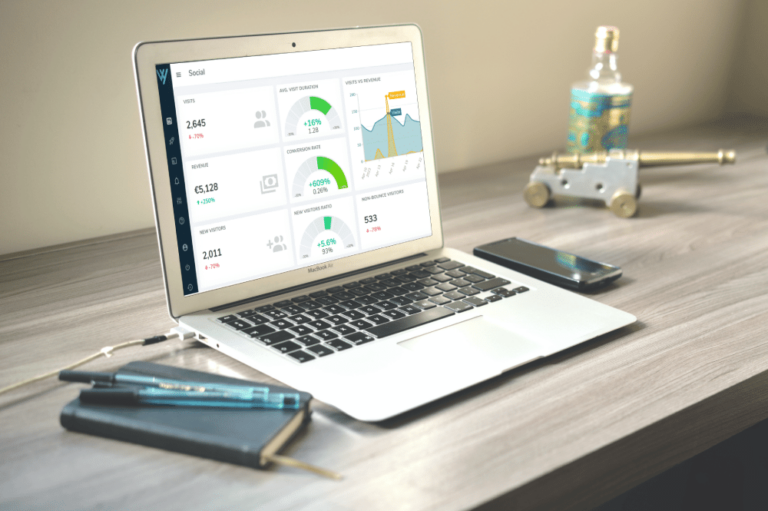Configuring URLs: an essential step for analysing your marketing actions
Setting up URLs is an essential step for any marketer who wants to know the impact of a campaign and measure its performance. The best known on the market are source / medium / campaign .
A url with parameters usually takes this form:
https://www.example.com/page?param1=value1¶m2=value2
- “?” marks the start of the parameters
- “&” separates each parameter
- “param1” and “param2” are keys (or variables) and “value1” and “value2” are their associated values
An e-retailer can thus customise its links to track traffic sources and conversion rates. For example:
https://www.exemple.com/produit?utm_source=facebook&utm_campaign=promo_spring
Here, utm_source lets us know that the user came via a Facebook campaign, and utm_campaign indicates that it is a spring promotion.
For advertisers who launch many campaigns, URL parameters are essential for analysing performance and personalizing the consumer experience. For a customer journey analytics solution like Wizaly, this is essential. In particular, they allow you to:
- Track performance precisely by measuring the effectiveness of marketing actions according to the objectives set at the outset. This allows you to know the origin of each visitor’s traffic and know the exact source of the conversion: email, display, social ads, etc. This data helps you know which campaigns, channels or content generate the most traffic and conversions. Without these parameters, it is difficult to know what really works and whether the results are aligned with the objectives.
- Analyse behaviours by helping to segment and analyse visitor behaviour according to specific criteria (traffic source, campaigns, etc.). This behavioural analysis can guide marketing decisions and improve user experience.
- Better target consumers and optimise user experience and improve conversion rates by personalising content, testing new messages, or targeting specific segments based on the performance of each source. displayed based on parameters
- Measure the ROI of campaigns by knowing the conversions generated by each source. This information allows you to compare the cost of each campaign with the revenue generated, thus allowing you to reallocate your budgets more effectively. Without this data, it is difficult to know if your advertising investments are profitable.
But today, between the multiplicity of marketing channels, the use of A/B testing or even retail events in the year (for example, at the end of the year, Black Friday, Cyber Monday, Christmas, winter sales, etc.), advertisers can have dozens of campaigns launched at the same time. While correctly setting up your URLs allows you to better analyse and manage your marketing actions, this operation can be tedious, time-consuming and a source of errors . Especially since it involves different internal teams (due to the multiplicity of channels), but also external teams (in the case where they are managed by agencies), thus multiplying the possibilities for mistakes.
Dynamic UrLs: a considerable time saving
With dynamic URL parameters, it becomes possible to automate the process and avoid the pitfalls of complex tracking plans. For example:
- On the Meta Ads tracking , it is possible to add the {{campaign.name}} parameters at the campaign level to automatically retrieve the name of the campaign as named the first time it was created.
The {{site.source.name}} parameter is at the source level, with the aim of automatically retrieving the information from the platform (instagram / facebook).
In the end there is only one line left to enter in the URL parameters in all campaigns:
utm_medium=social&utm_source={{site.source.name}}&utm_campaign={{campaign.name}}
This way, analysts can focus on interpreting results rather than cleaning the data .
Using dynamic URL parameters on advertising platforms like Meta, Google Ads, Bing, Pinterest… not only improves data readability, but also significantly reduces the working time of marketing teams.
| Meta | utm_source={{site.source.name}}utm_campaign={{campaign.name}} |
| Taboola | utm_campaign={campaign_name} |
| Bing Ads | utm_campaign={Campaign}} |
| Tiktok | utm_campaign=__CAMPAIGN_NAME__ |
| Affiliation | Example = iGraal-cashback: Effinity: utm_campaign=**affiliate_id**-**affilietype** Kwanko: utm_campaign={programName}-{typology} |
| etc… | ….. |
Automation for Performance
In addition to ensuring better data quality , using dynamic URL parameters also allows you to refine advertising strategies . By having an aligned view of performance, advertisers can:
✔️ Adjust their investments in real time
✔️ Identify the most profitable campaigns more quickly
✔️ Optimise return on advertising investment (ROAS)
Advice from Lucas Lesade, data analyst at Wizaly: “The adoption of dynamic URL parameters in advertising purchasing platforms is no longer an option but a necessity for digital marketing professionals. By improving data reliability and reducing manual work time, they allow advertisers to optimise their campaigns more efficiently and strategically.”
If you’d like to discuss dynamic URLS or any aspect of marketing analytics, book a chat with our team today.



